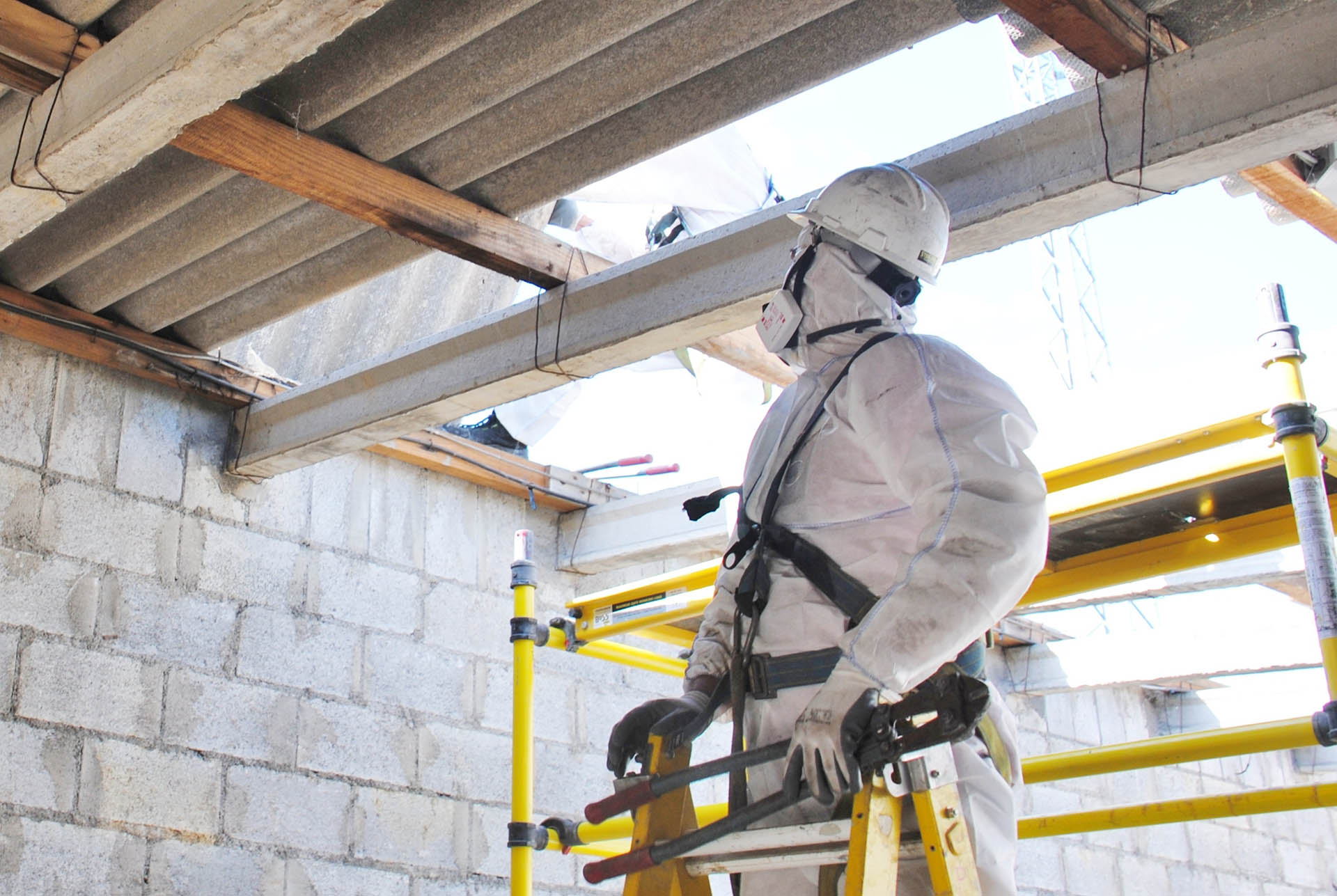Over 3000 building products have been found to contain asbestos.
Asbestos materials have been incorporated into buildings over the last hundred years or so due essentially to the intrinsic properties of the material and the fact that it could be relatively inexpensively mined and processed. The three main asbestos types occurring naturally belong to two main fibre structures.

By far the most abundant is CHRYSOTILE asbestos, commonly referred to as white asbestos. This mineral has been imported for well over one hundred years and is peculiar in the way that the fibres are very long and curly. This so called Serpentine structure arises due to the morphology of the crystal lattice forming concentric bands radiating out from a central core. The structure is unique amongst the asbestos fibre types.
The other crystalline forms have a significantly different crystal structure with parallel columns being apparent. This results in long, straight, fine fibres of needle like morphology. This second class of fibre, the so-called Amphiboles include AMOSITE, commonly referred to as brown asbestos, and CROCIDOLITE, commonly referred to as blue asbestos.
For many years it has been acknowledged that asbestos inhalation leads to a variety of lung diseases, which are irreversible and in some cases fatal.
Exposure to any asbestos fibre types may lead initially to a series of benign, often symptomatic effects, which also may be seen in people with no asbestos exposure, but if present to a high degree, are usually a sign that some asbestos exposure has occurred. These are generally referred to as pleural thickening and pleural plaques.
It has long been established that severe exposure, such being the case in the early asbestos processing factories, may also lead to a serious lung disease whereby much of the lung tissue becomes consolidated by scar tissue due to the prolonged irritation of the asbestos fibres retained in the lungs. This condition is in many ways similar to the disease of coal miners and indeed belongs to the group of lung diseases referred to as pneumoconioses. ASBESTOSIS, as it is commonly called, is not necessarily fatal, however, it is a sobering thought to realise that approximately fifty percent of those diagnosed as suffering from this disease will go on to develop a lung tumour/s.
When asbestosis is fatal it is usually indirectly so, with the extra strain placed on the heart resulting in left sided failure.
An additional complication relating to asbestosis is the fact that even when the sufferer is removed from exposure, the disease will continue to progress due to the large amount of fibre retained, which is not readily removed from the lungs by the natural defence mechanisms.
As the disease progresses, the lungs gradually lose their elasticity, making breathing extremely strenuous, and as the tissue is obliterated, the oxygen absorption process becomes extremely compromised. Asbestosis, in its advanced state, is severely disabling, with acute shortness of breath and weakness being apparent even with minimal exertion.
As previously mentioned, asbestos has long been associated with BRONCHIAL CARCINOMA although it is interesting to note that it is probably not such a potent carcinogen (cancer causing agent) as cigarette smoke. The disease does not have a high success rate for treatment.
Exposure to all asbestos fibre types has been shown to increase significantly the risk of contracting lung cancer, with the higher exposures resulting in an increased risk.
The third serious disease associated with exposure to asbestos via inhalation is the formation in the lung linings of a rare incurable tumour, MESOTHELIOMA. Mesothelioma and lung cancer has a long latent period before the disease can be diagnosed. In the case of lung cancer caused by asbestos exposure the delay between first exposure and onset of the disease is often 25 years or more, whereas in the case of mesothelioma this may be in excess of forty years. From diagnosis of mesothelioma up until death the time gap is rarely more than eighteen months and the diseases relentless progress is extremely distressing for both sufferers and carers.
Many schools of thought believe that asbestos exposure is the cause of almost all mesothelioma cases, and that some occur with only minimal exposure to the fibrous dust.
It is apparent from epidemiological studies that the single most potent causative agent of mesothelioma is exposure to BLUE (Crocidolite) asbestos with BROWN (Amosite) possibly a slight second and WHITE (Chrysotile) asbestos commonly found in bonded cement products.
Asbestos materials used in buildings have found almost ubiquitious application. The resistance of the mineral to attack by heat and chemicals, their great tensile strength, long flexible fibres and ability to be woven and incorporated into plastic, bitumen and cementitious matrices has resulted in universal use of the material. As such, they are commonly incorporated into spray coatings, thermal insulation products for hot and cold water applications, strong external weather boards and products, insulation boards in the form of fire protection cladding to structural steel work, partitions, ceilings, soffits, woven products in the form of blankets, packings, gloves, fire break curtains etc.
Various treatments are available for making asbestos building products safe. During refurbishment, the only really sensible solution is to remove the materials following a detailed survey of the building. The costs incurred on major contracts following the discovery of “unknown asbestos occurrences” following commencement on site by the main contractor are too well known to be investigated further in this section. It is imperative that wherever possible, all asbestos materials are removed prior to the main contract. This will ensure that the main contractor has free access to as much of the work area as possible from the onset, thus introducing greater flexibility in the areas of which he is able to work, to suit himself, and further reduces hold ups due to any removal works finishing behind schedule.